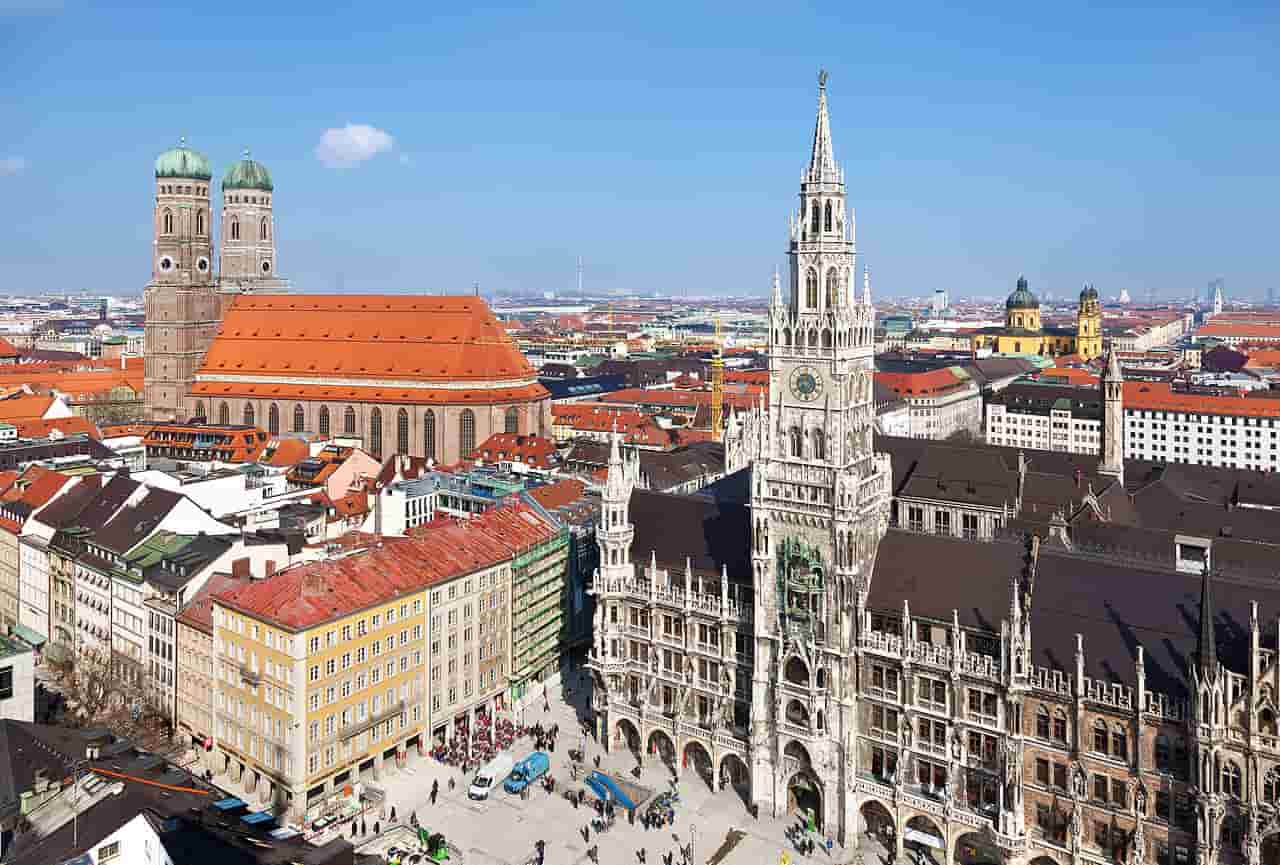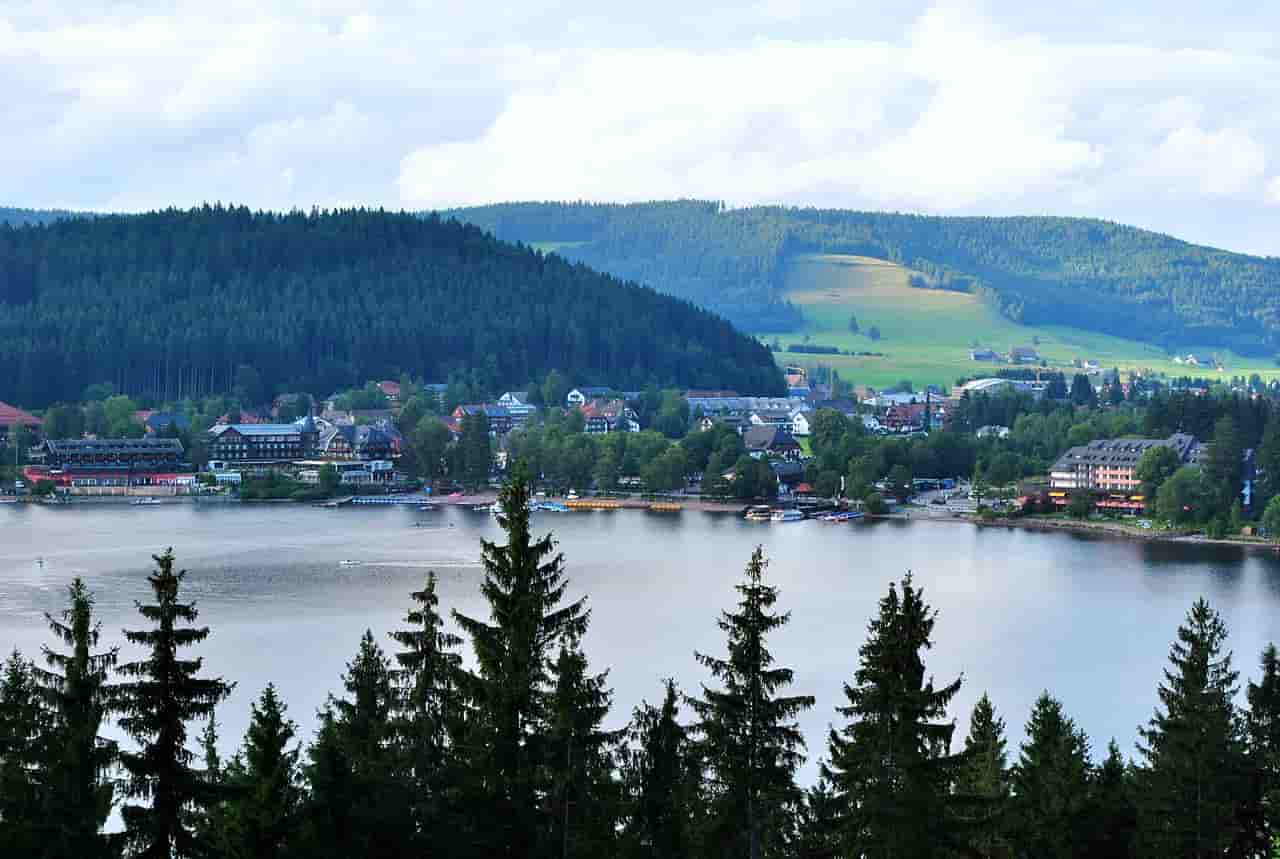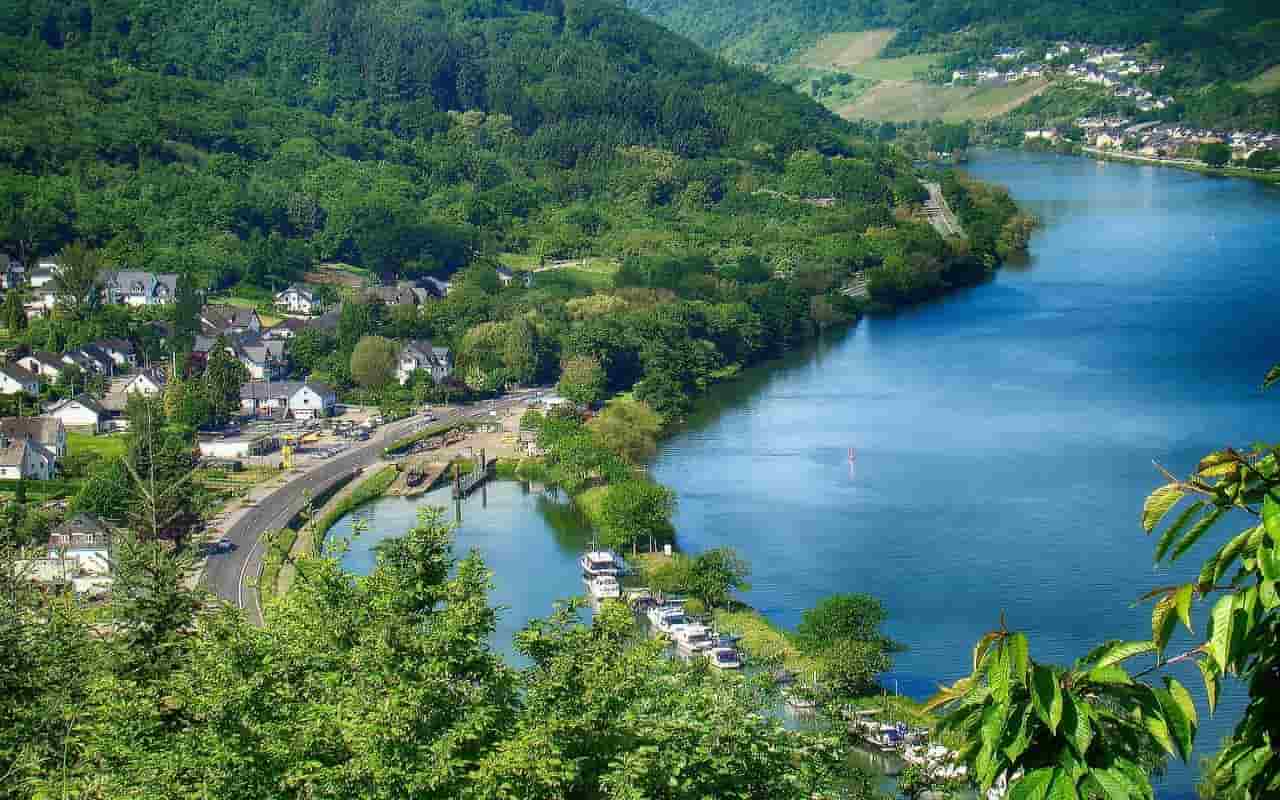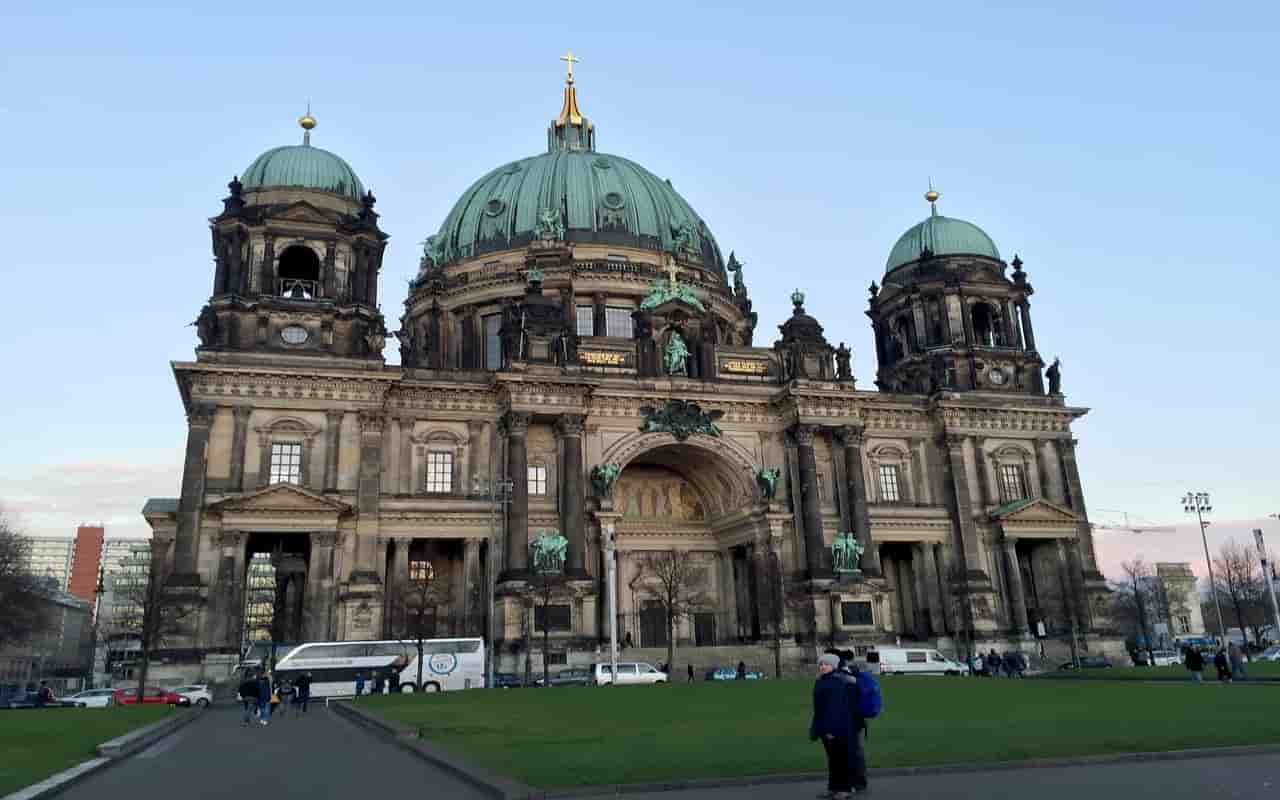Germany Itinerary - 10 Days
- By Seema
- Updatesd on Decemeber 27, 2023
In recent years, Germany has slowly emerged as Europe’s top tourist destination. The incredible country is more than just stunning landscapes, quaint medieval towns, fairytale castles, and classic vineyards. Germany is also known for its enigmatic forests, modern history, vibrant nightlife, diverse culture, and buzzing cosmopolitan vibes.
Overall, a trip to Germany is an unforgettable travel experience. The country is large, impressive, and beautiful, and it is impossible to see it all in one visit. The highlights are scattered throughout the country, making it difficult to plan an itinerary. This 10-day itinerary attempts to show you the best of Germany so that you can make the most of your time there.
Suggested 10-Day Itinerary for Germany
Germany Itinerary, Day 1–3: MUNICH
Our journey begins in Munich, Germany’s third-largest city. The city is well-connected, and flights to Munich are available from all over the world. Munich is famous for its Oktoberfest, which takes place every year from the middle of September to the end of October. But there is never a shortage of things to see and do in Munich.
Begin by walking through the old city center, as most of the iconic sites are within easy reach.
Climb St. Peter’s Church for breathtaking panoramic views, explore the world-class museums, enjoy a beer in one of the popular beer gardens, and immerse yourself in the vibrant street art and culture. If you like cars, you should go to the BMW Museum. The museum showcases automotive and motorcycle technological advancements. The bowl-shaped building houses a collection of vintage automobiles and motorcycles. Use Munich as a base to explore the Bavarian region on day trips.

Don’t miss the classic fairytale Neuschwanstein Castle perched on a rugged hill – a perfect blend of Roman, Byzantine, and Gothic architecture. The inside of Neuschwanstein Castle is not as spectacular, romantic, or fairytale-like as the exterior, which is simply magnificent. The Castle is extremely popular, so it is best to book a tour in advance. The drive from Munich to Neuschwanstein Castle takes about two hours. If you use public transport, it will take you three hours. There are no direct train connections. You must take the train and bus, then ascend to the castle on foot, by horse carriage, or shuttle bus.
Places to visit in Munich:
- St. Peter’s Church
- Rathaus – City Hall
- Frauenkirche – Cathedral Church of Our Lady
- Hofgarten – the Royal Garden
- Marienplatz Square – the Main Square
- Hofbräuhaus – the Beer Hall
- Deutsches Museum – Museum of science and technology
- Nymphenburg Palace
- Munich Residenz – Palace complex
- Dachau Concentration Camp (day trip) – Dachau was one of Nazi Germany’s first concentration camps.
- Neuschwanstein Castle (day trip)
- Zugspitze (day trip) – Germany’s highest mountain
Germany Itinerary, Day 4-5: BLACK FOREST
It will take you five hours by car or six hours by train to reach the Black Forest from Munich. The Black Forest region, the birthplace of the Grimm Brothers’ Tales, is a massive spruce-covered mountain range steeped in fascinating myths. There are many charming villages and small towns to stay in the Black Forest, but Baden-Baden and Gengenbach serve as good bases for day trips and our onward journey to Heidelberg. The forests are beautiful, and there is plenty to do there, such as exploring the quaint villages, sampling the delectable Black Forest Cake, learning about cuckoo clock traditions, relaxing at a spa, and hiking in the enchanting, lush forests.
Places to visit in the Black Forest:
- Triberg Waterfalls
- Lake Titisee
- House of 1000 Clocks, (Triberg) – the largest selection of Black Forest cuckoo clocks in the area.
- Thermal Spas at Baden-Baden
- Lichtenstein Castle
- Freiburg– Historic Town
- Ravenna Gorge
- The Black Forest Open-Air Museum

Germany Itinerary, Day 6: HEIDELBERG
Depending on your mode of transportation and where you are staying in the Black Forest, it will take you 1-2 hours to reach Heidelberg, a picturesque town known for its University. Heidelberg is one of Germany’s most popular cities, and most of its attractions can be reached on foot. You can climb or take the funicular to the castle at the top of the hill for a bird’s-eye view of the old town and the river.
Places to visit in Heidelberg:
- Church of the Holy Spirit
- Heidelberg Castle
- Hauptstrasse and the Altstadt – Old Town
- Karl Theodor – Old Bridge
- Heidelberg University
Germany Itinerary, Day 7-8: MOSELLE VALLEY
Moselle Valley is about a two-hour drive from Heidelberg. Germany is traversed by the Moselle River, a tributary of the Rhine. The Moselle Valley is the area surrounding the beautiful Moselle River. The valley is famous for its fine wine, sleepy medieval villages, crumbling fairytale castles, steep lush-terraced vineyards, and beautiful promenades. Koblenz is a perfect base for exploring the Moselle Valley region due to its central location. If you prefer larger cities, Bonn and Cologne are also viable options.
Places to visit in the Moselle Valley:
- Cochem Castle
- Trier – Germany’s oldest town
- Pfalzgrafenstein Castle
- Schloss Stozlenfels Castle
- Bernkastel-Kues – for wine tasting
- Traben-Trabach town
- Beilstein’s River Promenade
- Eltz Castle

Germany Itinerary, Day 9-10: BERLIN
It takes about 6 hours (by train and car) to get from the Moselle Valley (Koblenz) to Berlin, so start early because you have a full day in Berlin. Any trip to Germany would be incomplete without a stop in the bustling, hippest capital city. Berlin is cultural, political, and contemporary, with history at every turn. The city may not be visually appealing, but a visit to Berlin will provide vivid glimpses of the twentieth century’s tumultuous events, such as when Berlin was heavily bombarded during World War II.
Berlin is too big to see in two days, but you can still make the most of it by seeing the main sights. The city’s most visible landmark is Berlin’s TV Tower, which rises 368 meters into the sky. You can enjoy staggering 360-degree panoramic views of the entire city – and beyond! Take a walk through Tiergarten Park, stroll along the tree-lined boulevards of Prenzlauer Berg, and enjoy the crazy nightlife. Don’t miss the world’s largest open art gallery, which adorns sections of the Berlin Wall with murals painted across a mile.
Joining the free walking tour that begins at Brandenburg Gate is one of the best ways to understand the essence of Berlin. Underground tours in Berlin are another way to learn about the city’s complex history, as you can see war bunkers and escape tunnels in now-defunct metro stations.
Places to visit in Berlin:
- Brandenburg Gate
- Museum Island – a collection of five world-class museums
- Berlin Wall Memorial
- Prenzlauer Berg – Boulevard
- Reichstag – the German Parliament
- East Side Gallery (Berlin Wall)
- Holocaust Memorial – Memorial to the murdered Jews of Europe
- Tiergarten Park
- Mauerpark – Flea Market
Germany Itinerary, Day 11: DEPART FROM BERLIN
It is the end of our 10-day German itinerary and time to depart for your next destination from the Berlin airport. Try to take an evening flight, so that you can use the day to explore the remaining attractions of historical Berlin.

Best time to visit Germany?
Germany is a year-round destination, and each season has its charms. June to September is the peak season with warm, sunny weather and long days. Perfect weather to enjoy the outdoor activities and the music festivals celebrated in different parts of the country. Winters can be cold, drab, and blustery, but you can enjoy skiing opportunities, stunning landscapes, Christmas markets, and rock-bottom rates. Visiting Germany in May is a good option as it starts getting warmer, trees are in full bloom, the crowds have yet to arrive, and everything is affordable. Don’t miss the opportunity to visit Munich in autumn when the iconic Oktoberfest is celebrated. Millions of people reach Munich from all over the world, the whole city is in a festive mood, and beer flows like water.
How to reach Germany?
Since Germany is located in the heart of Europe, it is easy and economical to travel there from anywhere in the world. Frankfurt Airport is one of the world’s busiest. Germany has a comprehensive airport network that spans the entire country, allowing you to choose your arrival/departure city at your convenience. Our trip begins in Munich and concludes in Berlin, both of which are well-connected. Germany is linked to all neighboring countries by extensive and frequent train services, most of which are operated by Deutsche Bahn. All of the major cities are also well-connected by bus routes, so getting to Germany is never an issue.
Getting around in Germany?
The two most popular ways to travel within Germany are by train and by car. Unless you have a car, the rail is the most convenient way to reach most parts of the country, with frequent departures. They are super fast, dependable, and comfortable, but they are not always cost-effective. Book a German Eurail Pass to travel within Germany – it’s stress-free, inexpensive, and allows you to hop on and off whenever you want. Reservations are not required but are strongly advised during holidays and weekends. Flights connect most German cities, but when you add up the wait time at the airport and all the formalities, taking the train makes more sense.
Driving on Germany’s famous autobahn is an incredible experience if you are used to driving at high speeds. Airport car rentals are available, and one-way rentals are permitted without additional fees. If you don’t want to drive, coach travel between cities is inexpensive and reliable, though not as efficient or fast as trains. Hitchhiking and ride-sharing are also popular in Germany.
Getting around the city?
Germany, like the rest of Europe, has an excellent public transport system. In cities such as Berlin and Munich, a single ticket grants access to U-Bahn (subway), S-Bahn (above ground), trains, and trams. A multi-ticket strip or day pass will be less expensive than a single-ride ticket. Without a car or taxi, efficient public transport will get you everywhere. Taxis are expensive and can be avoided. Uber’s availability in Germany is quite limited. In cities and along popular cycling routes, Germany has dedicated bike lanes. You can rent a bike to get around.
Things to Know Before Traveling to Germany
- Although German is the official language of Germany, English is widely spoken and understood throughout the country. If you visit smaller towns and villages, you may have difficulty communicating with the locals, but in large cities and popular tourist areas, language should not be a barrier to getting things done.
- The euro has been the official currency of Germany since 2002. One Euro is around 1.11 dollars
- Don’t miss the traditional Christmas markets if you’re visiting during the holiday season. They offer a festive atmosphere, as well as local crafts and delectable seasonal treats.
- There are numerous museums and historical sites in Germany. If you intend to visit multiple attractions, consider purchasing a museum pass to save money on admission.
- German cuisine is diverse and delicious. Don’t miss out on trying traditional dishes such as schnitzel, sausages, pretzels, and sauerkraut. Also, indulge in the variety of German beers.
- Tipping is common in restaurants and cafes. A tip of around 5-10% is customary.
- While credit and debit cards are widely accepted, it’s a good idea to carry some cash, especially in smaller towns or for smaller purchases.
- Germans place a high value on punctuality, so arrive on time for appointments and reservations.
- Tap water in Germany is safe to drink, so carrying a reusable water bottle is a smart idea.

This Post Has 4 Comments
I’d love to explore Germany at some point! I visited Berlin around 7 years ago and absolutely loved it. It’d be great to travel around the country and discover more though! Your 10 day itinerary is amazing 🙂
Beautiful! Thanks for sharing these pictures and information with me. This is where my heritage is from, and my husband’s Mom was born and raised in Germany.
~Michelle
Very helpful itinerary. Keep up the good work. 😀
Hahaha!! Thanks